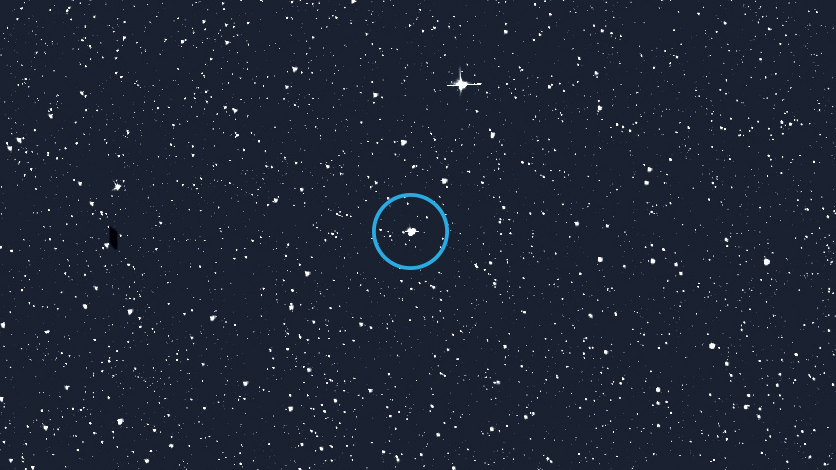Ancient North Star Thuban Eclipses Its Stellar Companion (Video)
The star that ancient Egyptians once used as their North Star is part of a binary pair of stars that periodically eclipse one another, recent observations show.
Known as Alpha Draconis, or Thuban, the star is located 270 light-years from Earth in the constellation of Draco, the dragon. Thuban is estimated to be five times brighter and nearly double the size of its stellar companion.
Using NASA's Transiting Exoplanet Survey Satellite (TESS), astronomers found that Thuban and its fainter companion star eclipse, or pass in front of each other from Earth's perspective, every 51.4 days at an average distance of about 38 million miles apart, NASA officials said in a statement.
Video: Alpha Draconis Star And Companion Eclipse Each Other Regularly
Related: Mesmerizing Space Spiral Surrounds Binary Star System
"The first question that comes to mind is 'how did we miss this?'" Angela Kochoska, a postdoctoral researcher at Villanova University in Pennsylvania, said in the statement. "The eclipses are brief, lasting only six hours, so ground-based observations can easily miss them. And because the star is so bright, it would have quickly saturated detectors on NASA's Kepler observatory, which would also mask the eclipses."
Thuban is bright enough to be seen by the naked eye. Around 2600 B.C., when the ancient Egyptians were building the earliest pyramids, Thuban appeared as the North Star. At the time, it was the closest star located near Earth's geographic north pole, where the planet's axis of rotation intersects with its surface. However, Earth's axis shifts or "wobbles" over time — a cyclic movement known as precession — which is why Polaris is now the North Star.
Using TESS, the researchers were able to track changes in the stellar pair's brightness for 27 days at a time, revealing that Thuban and its companion are among the brightest "eclipsing binaries" — pairs of stars that pass in front of one another. During the eclipses, neither star completely conceals the other, according to the statement.
Breaking space news, the latest updates on rocket launches, skywatching events and more!
Observing the Thuban system during these eclipses could help astronomers get a more accurate measurement of the mass and size of each star. Members of the team plan to use ground-based follow-up observations to further study the pair, and they expect that TESS will reveal more eclipsing binaries in other parts of the sky.
"Discovering eclipses in a well-known, bright, historically important star highlights how TESS impacts the broader astronomical community," Padi Boyd, the TESS project scientist at NASA's Goddard Space Flight Center in Greenbelt, Maryland, said in the statement. "In this case, the high precision, uninterrupted TESS data can be used to help constrain fundamental stellar parameters at a level we've never before achieved."
Kochoska presented the team's findings at the 235th meeting of the American Astronomical Society (AAS) in Honolulu on Jan. 6. The study was published Oct. 31, 2019, in the Research Notes of the AAS.
- NASA's TESS Mission Finds Its Tiniest Alien Planet Yet
- 30 'Homeless' Binary Stars Spotted Drifting in the Void Outside Any Known Galaxy
- How to Spy on Alpha Centauri and Other Binary Stars to Hunt Exoplanets
Follow Samantha Mathewson @Sam_Ashley13. Follow us on Twitter @Spacedotcom and on Facebook.


Samantha Mathewson joined Space.com as an intern in the summer of 2016. She received a B.A. in Journalism and Environmental Science at the University of New Haven, in Connecticut. Previously, her work has been published in Nature World News. When not writing or reading about science, Samantha enjoys traveling to new places and taking photos! You can follow her on Twitter @Sam_Ashley13.

